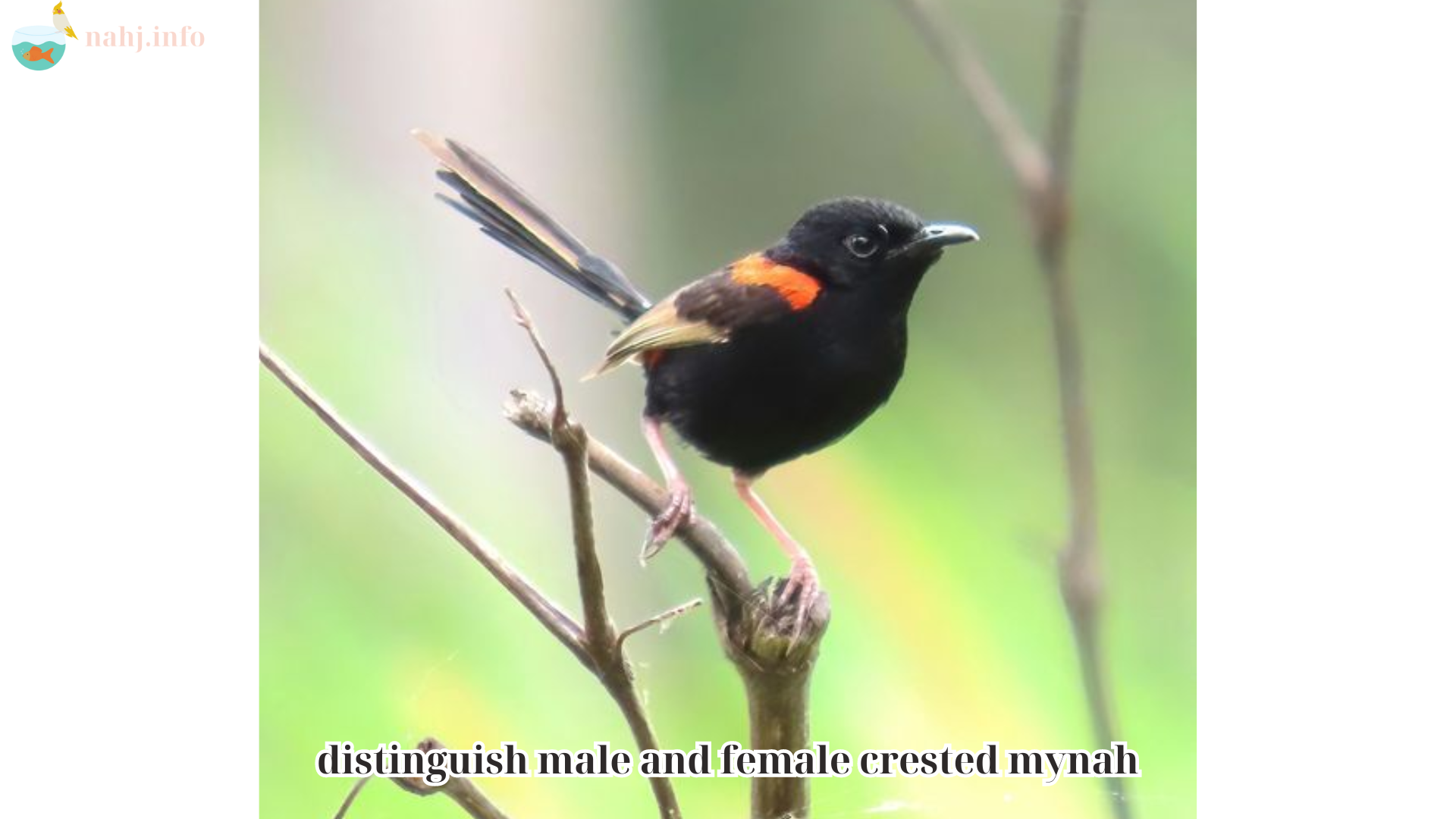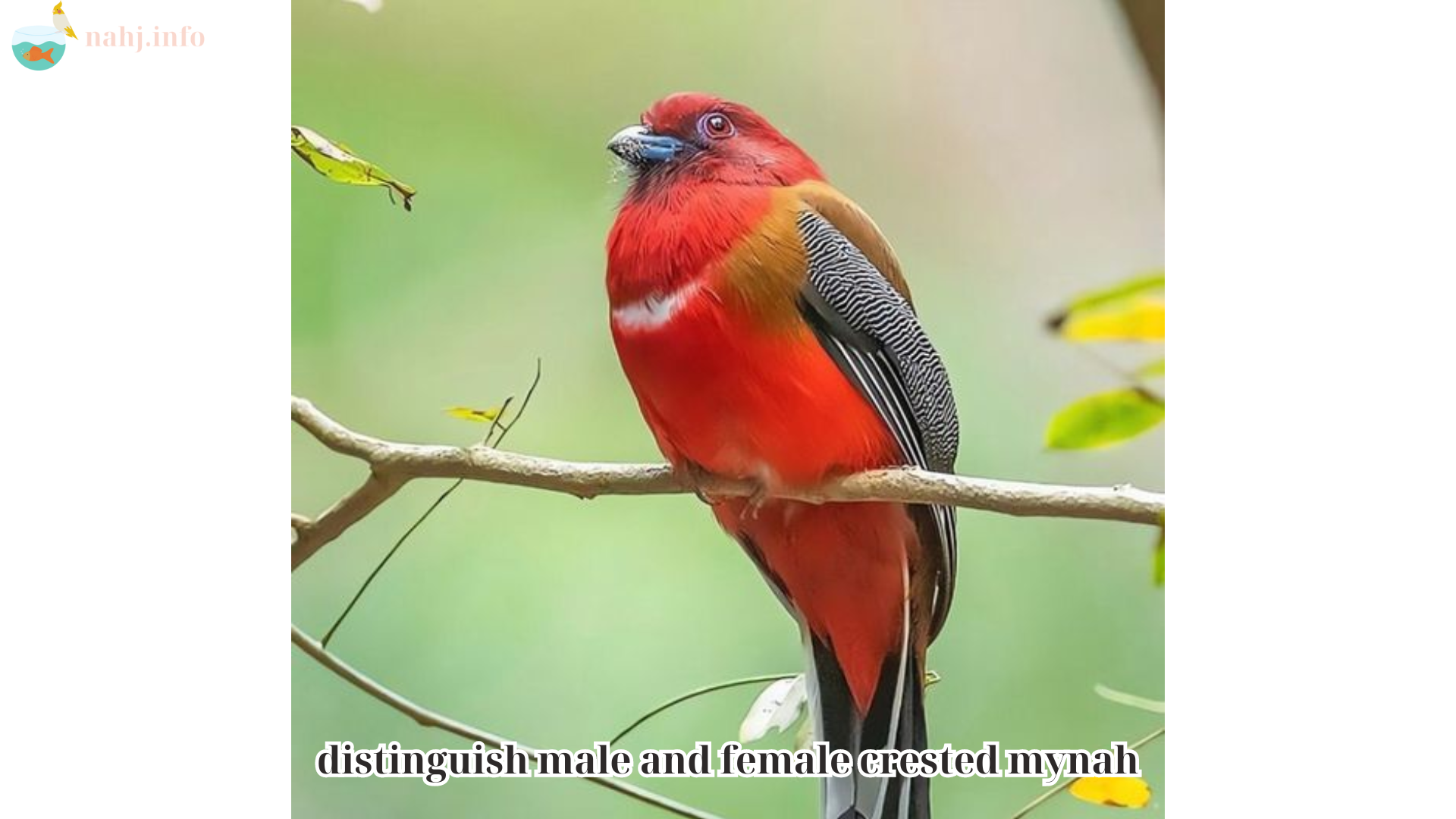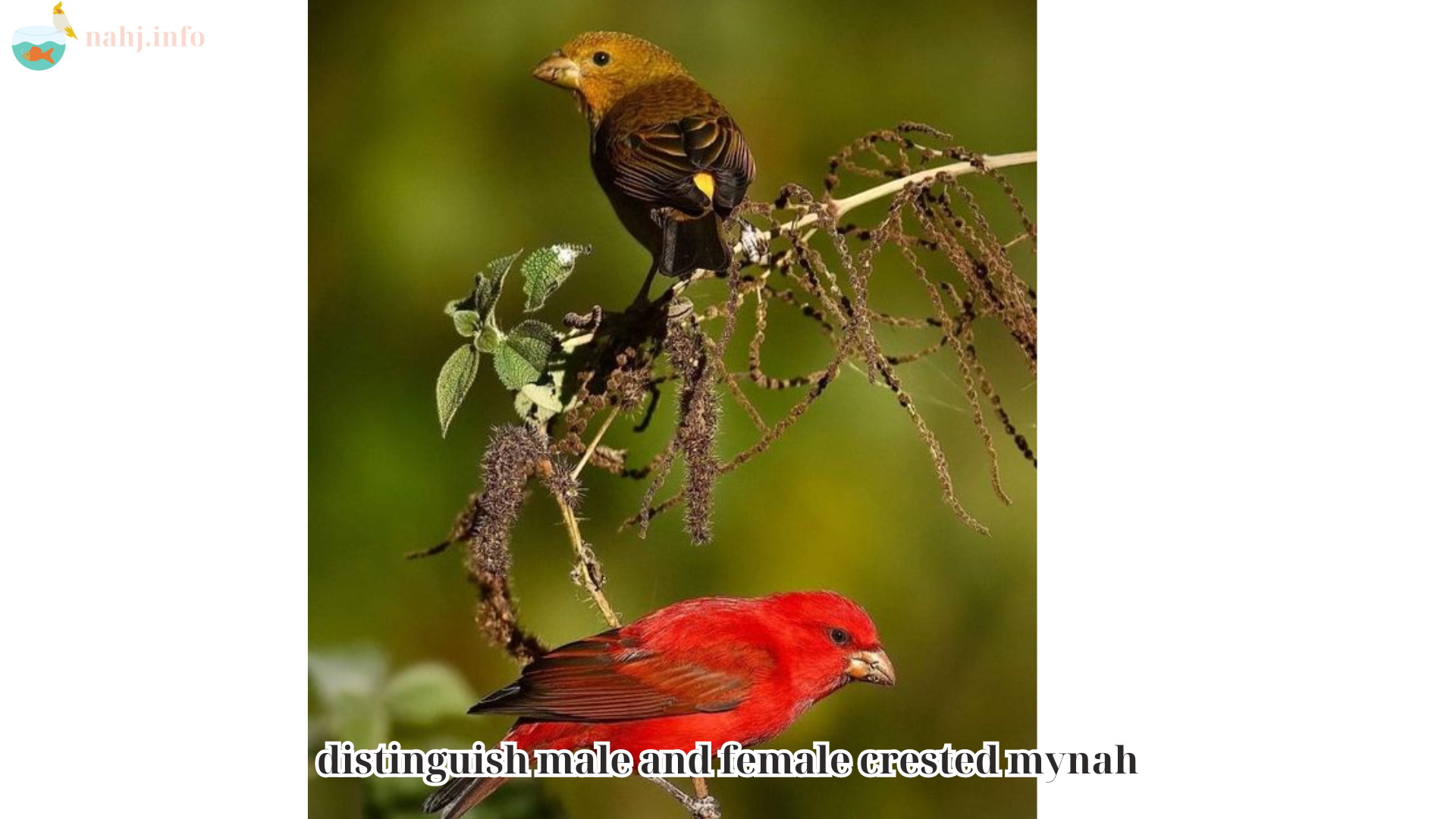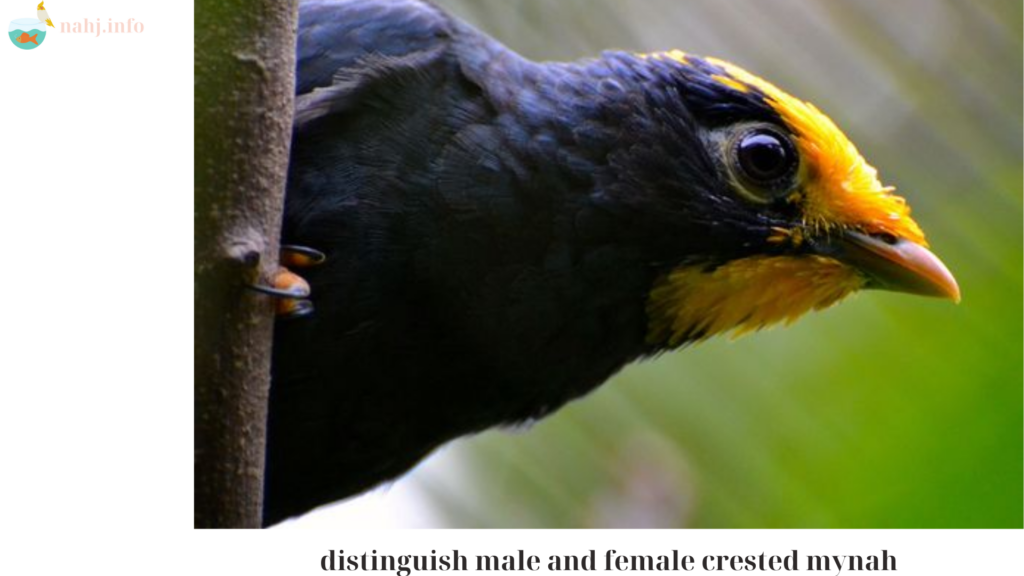Distinguishing between male and female crested mynahs (Acridotheres cristatellus) can be challenging as they exhibit minimal sexual dimorphism, meaning males and females look very similar. However, there are subtle differences and behavioral clues from Nahj that can help identify the sex of these birds.
Table of Contents
TogglePhysical Differences: Distinguish Male and Female Crested Mynah

1. Size
- Males: Tend to be slightly larger and bulkier.
- Females: Usually a bit smaller and more slender.
2. Crest
- Males: Often have a more prominent and well-defined crest on their heads.
- Females: The crest might be less pronounced or slightly shorter.
3. Plumage
- Males: May have slightly glossier and more iridescent plumage, though this is not always a reliable indicator.
- Females: Plumage is similar but might appear slightly duller.
Behavioral Differences

1. Singing and Vocalizations
- Males: Typically more vocal, especially during the breeding season. They sing to attract females and establish territory.
- Females: Less vocal compared to males and may respond to the male’s calls rather than initiating them.
2. Courtship Displays
- Males: Engage in more elaborate courtship displays, such as puffing up their feathers, spreading their wings, and performing specific postures to attract females.
- Females: Observe the displays and may show interest by approaching the male or responding with calls.
3. Nesting Behavior
- Males: Often take the lead in selecting and defending nesting sites.
- Females: Focus more on nest building and incubation of eggs once a site is chosen.
Professional Identification
In many cases, visual and behavioral clues might not be enough to accurately determine the sex of crested mynahs. For precise identification, especially for scientific or breeding purposes, professionals often rely on:
- DNA Sexing: A genetic test that can accurately determine the bird’s sex.
- Surgical Sexing: A procedure performed by a veterinarian, though this is less common and more invasive.
4. Eye Color
In some mynah species, slight differences in eye color or the intensity of the eye ring might be noted between sexes, though this is not always reliable for crested mynahs.
5. Beak and Legs
Occasionally, subtle variations in the coloration or size of the beak and legs can be seen. These differences are often too minor to serve as reliable indicators without close and careful observation.
Behavioral Differences 
4. Feeding Behavior
- Males: During the breeding season, males may exhibit behaviors such as feeding the female as part of their courtship.
- Females: Typically more focused on nesting and may not participate in such feeding displays.
5. Territorial Aggression
- Males: More likely to engage in aggressive behavior to defend their territory from other males.
- Females: May be involved in territorial defense but are generally less aggressive than males.
Professional Identification Techniques (Continued)
1. DNA Sexing
Procedure:
- Sample Collection: Feathers, blood, or eggshell membranes can be used for DNA sampling. Feather sampling is non-invasive and commonly used.
- Laboratory Analysis: The sample is sent to a laboratory where DNA is extracted and analyzed to determine the bird’s sex.
Advantages:
- Accuracy: DNA sexing is highly accurate, typically over 99%.
- Non-Invasive: Feather sampling, in particular, is non-invasive and stress-free for the bird.
Disadvantages:
- Cost: DNA sexing requires laboratory services, which can be costly.
- Time: Results are not instantaneous and depend on the turnaround time of the laboratory.
2. Surgical Sexing
Procedure:
- Preparation: The bird is anesthetized for a minor surgical procedure.
- Examination: A small incision is made to allow a vet to visually inspect the bird’s reproductive organs.
Advantages:
- Immediate Results: The sex of the bird can be determined immediately.
- Certainty: Direct observation of reproductive organs provides conclusive results.
Disadvantages:
- Invasiveness: It is an invasive procedure with associated risks of anesthesia and surgery.
- Recovery: The bird requires time to recover from the procedure.
- Cost: It can be expensive due to the need for a specialized avian veterinarian.
3. Endoscopy
Procedure:
- Preparation: Similar to surgical sexing, the bird is anesthetized.
- Endoscopic Examination: A small endoscope is inserted to visually examine the internal reproductive organs.
Advantages:
- Minimally Invasive: Less invasive than traditional surgical sexing.
- Immediate Results: Provides immediate and accurate results.
Disadvantages:
- Specialized Equipment: Requires specialized equipment and veterinary expertise.
- Cost: Can be expensive.
Practical Tips for Bird Enthusiasts
If you are a bird enthusiast and want to determine the sex of your crested mynah without resorting to professional methods, here are a few practical tips:
- Observation During Breeding Season: Pay attention to courtship behaviors and vocalizations during the breeding season. Males are generally more active in displaying and singing.
- Behavioral Notes: Keep a detailed log of behaviors you observe over time, such as feeding, aggression, and nesting activities. Patterns may emerge that help you identify males and females.
- Consult Avian Experts: If you are part of a bird-watching group or have access to avian experts, seek their guidance. Experienced bird watchers may notice subtle cues that are not immediately obvious.
- Join Bird-Watching Communities: Engage with online communities and forums dedicated to bird watching. Sharing videos and pictures of your mynahs can elicit helpful feedback from other enthusiasts.
- Utilize Technology: Modern tools such as high-resolution cameras and recording devices can help capture details and behaviors that might be missed by the naked eye.
Conclusion
Distinguishing between male and female crested mynahs can be challenging due to their similar appearance. While subtle physical and behavioral differences exist, they often require keen observation and experience to identify reliably. For those needing precise determination, professional methods such as DNA sexing or endoscopy are recommended. Ultimately, understanding these differences can enrich your bird-watching experience and deepen your appreciation for these fascinating birds.

